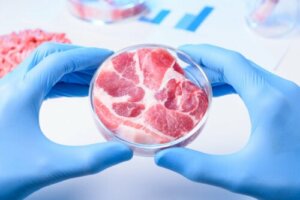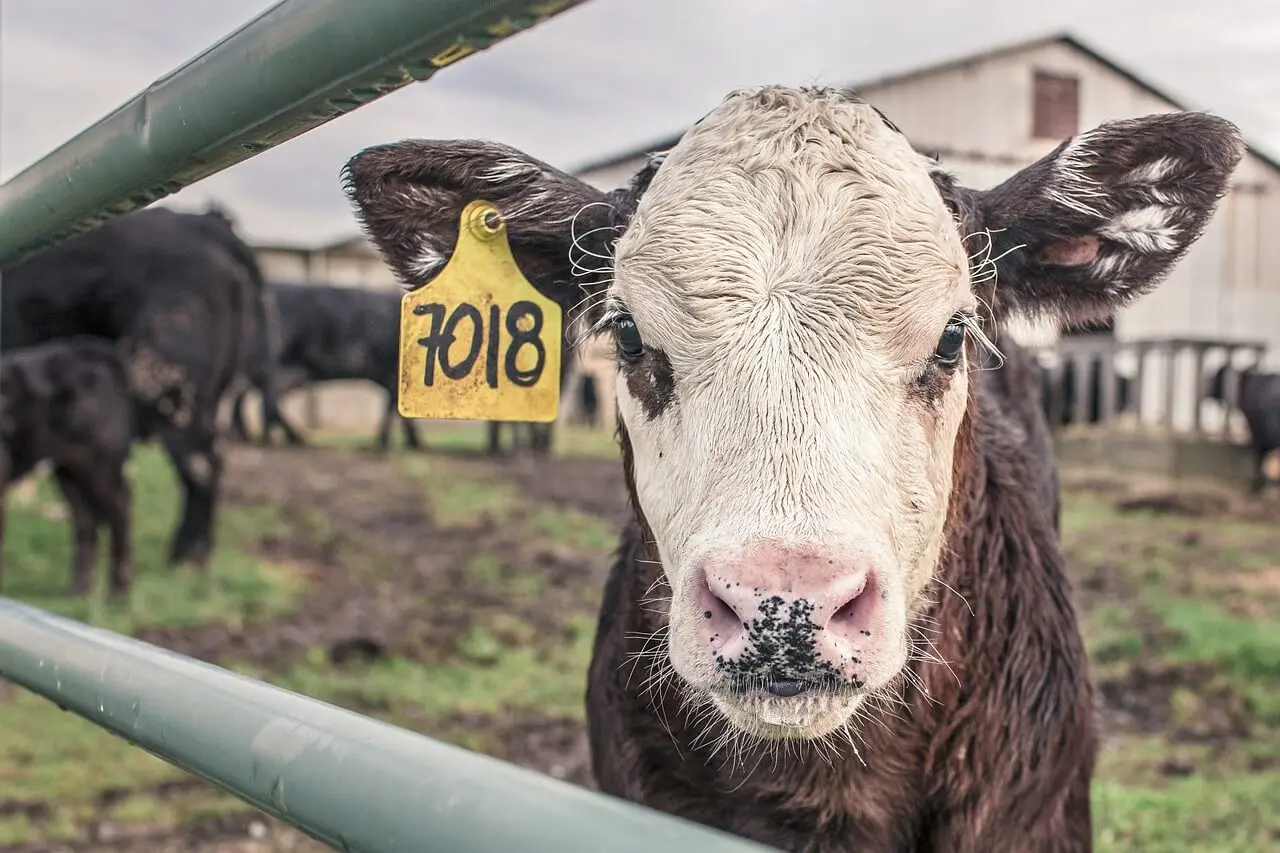Advantages and Disadvantages of Synthetic Meat


Written and verified by the nutritionist Anna Vilarrasa
Plant-based alternatives to meat have been on the market for some time. And now it’s quite possible that in a relatively short time they’ll be sharing their shelf space with synthetic meat (also called laboratory-produced meat or cultured meat)
However, in this case, these aren’t vegan options, as their production is based on cells extracted from an animal. Their appearance generates uncertainty and debate, bringing advantages and disadvantages that are interesting to consider.
Synthetic meat as an alternative to traditionally produced meat
Per capita meat consumption has been increasing since 1960 globally, although with notable differences between countries. Its production has a strong impact on the environment and health, and this has led experts to make new recommendations in this regard in recent years.
Consumers have also begun to make changes in their meat consumption habits. In Spain, for example, in the last two years, the vegetarian products market has increased its sales by 48%. In addition, their supply and variety is increasing, both in supermarkets and restaurants.
For the time being, synthetic meat is being presented as a viable and positive alternative to reduce the consumption of conventional animal meat. But its development is at a very early stage. Its marketing has so far been approved in Singapore.
There are some doubts as to how the public will accept these new products. As a general rule, anything perceived as unnatural generates some reticence. In addition, there may be cultural, ethical, and religious barriers that will have to be taken into account.

Discover vegetable alternatives to meat: The Vegetarian Diet: A Guide for Beginners
What is synthetic meat?
Synthetic meat is a product created in the laboratory from animal stem cells. These are extracted from the thigh part – of a chicken, cow, or pig – and are multiplied in a controlled environment. Other components, such as myoglobin, connective tissue, or fat, are added to ensure that they do this in the correct way.
Its official introduction was made in London almost a decade ago, when the first laboratory hamburger was presented. In this case, it was composed of 10,000 strips with myotubes grown in a hydrogel. Colorants, flavors, and ingredients had been added to it to obtain the desired texture.
The technology used for its production is still under development. For this reason, it’s difficult to know exactly what the commercial production methods and the exact final composition will be.
The aspiration of those responsible is to obtain meat as close as possible to that of traditional production. This concerns both the texture and variety of the final products, as well as their biological and nutritional composition.
What impact does the production of synthetic meat have on the environment?
Currently, one of the main global food challenges is meat consumption and its intensive production. We know that there are possible implications for human health. However, we also need to take into account the challenge in terms of sustainability and the environmental footprint.
The non-governmental organization Greenpeace, with a strong presence around the world, has pointed out these major problems. Among them are the contribution to climate change, the grabbing of arable land, and water pollution. It also implies economic concentration, a lack of respect for animal welfare, and a loss of biodiversity.
Faced with this reality, the promoters of synthetic meat present it as a possible and viable solution for the future. They claim a lower environmental impact in its production, but there are still many unknowns and questions.
There are few studies beyond the calculation of greenhouse gas emissions. When more in-depth analyses are attempted, most authors conclude that it’s still too early to measure the impact accurately.
As an example, Lynch and Pierrehumbert conclude that “it is not yet clear whether cultured meat production would provide a more climate-sustainable alternative. Cultured production does not grant a license for unlimited meat consumption.”
Advantages of synthetic meat
The idea of the promoters of this type of product is to achieve meat that’s friendlier to the environment and human health. In their favor they defend the following positive aspects:
- A nutritional composition adapted to prevent the negative impact of red meat on health.
- Improved animal welfare, as a very small sample of the animal is needed for further development. In addition, the cell extraction process isn’t very invasive.
- The disappearance of the use of antibiotics in livestock farming, which would reduce bacterial resistance.
- Reduced environmental consequences in terms of gas emissions, water, and land use.
- Reduction of food infections by intestinal bacteria, such as Salmonella or E. coli.
Take a look at this article: Tips for Integrating Meat into a Healthy Diet
Synthetic meat also has disadvantages
Beyond the debate about its impact on the environment, there are other controversial points in the production and possible consumption of in vitro processed synthetic meat. Some of the most important ones are discussed in an analysis published in the journal Nature Communications and can be summarized in the following sections.
Economic problems
The economic viability of meat production in laboratories is one of the controversial points. As an example, Maastricht University developed a hamburger in 2013 with a cost price of $280.40 per unit. On a large scale, the In Vitro Meat Consortium estimates that this price could be double that of chicken meat.
Organoleptic characteristics
It’s extremely difficult to obtain a taste and texture similar to that of conventionally raised meat. It’s estimated that this will be one of the key points in obtaining the adherence of new consumers.
To achieve this, it’s necessary to reproduce the muscle and adipose tissue, in addition to adding some flavoring and texturizing ingredients. The first prototypes imitate processed meat products, such as hamburgers or sausages, since the difficulty of emulating classic cuts is much greater.
Nutritional values
The nutritional content of synthetic meat is also unknown at the moment. It seems clear that some compounds, such as vitamin B12, cannot be provided. However, there’s the possibility of supplementing the final products or using genetic modifications.
Health implications
The final nutritional composition of laboratory meat and its production method may affect human and public health. This has to do with the occurrence of animal-borne diseases, infectious diseases, diet-related health problems (colorectal cancer and cardiovascular problems) or nutrient deficiencies.
Long-term safety
The production of this type of meat is based on accelerated cell reproduction. This raises questions about the food safety of stem cell-based products. In addition, there are growth factors and other agents that are added, whose effect on the organism hasn’t been tested.
Effects on livestock farming
There’s a real risk of putting an end to livestock production, according to Professor of Animal Production, José Antonio Mendizábal. Not only intensive breeding, but also traditional or extensive breeding. This is responsible for preserving native breeds, keeping forests clean, populating rural areas, and producing quality, nutritious organic food.

Synthetic meat: a new technology with pros and cons
The growing demand for meat products poses a challenge of global dimensions. Laboratory or synthetic meat is presented as an alternative for consumers who want responsible options, without making changes in their diet.
But for the moment it’s difficult to quantify the advantages and problems of its production, commercialization, and consumption. As well as the possible impacts on the health of people, animals, and the environment.
In addition, there are a large number of ethical, religious, and cultural questions that will have a direct impact on public acceptance. For the time being, there are other alternatives to meet the challenge. One option is to reduce the presence of meat through plant-based alternatives and by promoting other extensive livestock farming systems.
All cited sources were thoroughly reviewed by our team to ensure their quality, reliability, currency, and validity. The bibliography of this article was considered reliable and of academic or scientific accuracy.
- Bryant Ch.J. Culture, meat and cultured meat. Journal of Animal Science. Agosto 2020. 98(8): ska 172.
- Lynch J, Pierrehumbert R. Climate impacts of cultured meat and beef cattle. Frontiers in sustainable food systems. Febrero 2019. 3:5.
- Mendizábal Aizpuru J.A. La llegada de la carne artificial y sus consecuencias para la ganadería. The conversation. Febrero 2021.
- Our world in data. Per capita meat consumption by type, world 1961 to 2013.
- ProVeg Internacional. El mercado de los productos plant-based registra un crecimiento récord del 48% en España en solo dos años. Febrero 2021.
- Rubio N.R, et al. Plant-based and cell-based approaches to meat production. Nature communications. Diciembre 2020. 11:6276.
- Singapore Food Agency. Safety of alternative protein.
- The in Vitro Meat Consortium. Preliminary economics study Projects 29071. Marzo 2008.
This text is provided for informational purposes only and does not replace consultation with a professional. If in doubt, consult your specialist.








